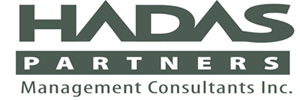Hi there, and welcome to our second podcast blog! I have a great leadership story for you today, straight “from the trenches”!
The previous podcast was all about setting direction to thrive in the face of this pandemic. And you heard me say that implementing this new direction, would likely be the biggest change project you and your organization will ever have to manage.
 But change projects are notoriously complex, and have a high failure rate. And if you are planning to thrive and grow, you can’t afford to fail. You have to succeed on the first try.
But change projects are notoriously complex, and have a high failure rate. And if you are planning to thrive and grow, you can’t afford to fail. You have to succeed on the first try.
So what is the first thing you should focus on getting right? Let’s start there.
There are many components you have to get right to transform your organization but one in particular will set the tone right from the outset. If you get this right, your chance of success goes up exponentially. If not, heartache and suffering will dog you throughout.
What is this crucial element?
It’s leadership, and in this blog I am going to give you a great example of what that looks like in real life. I’ll also share with you a tool that I have used very effectively to get leadership commitment. Finally, I’ll give you some advice on how you can become the best change leader you can be, regardless of your position in your company.
What great Change Leadership ‘Looks Like’
So let’s get right into the example. As you can imagine, after 20 years leading change on large and complex business transformations, I have seen all kinds of leadership behaviours. Some, however, really stand out for me in a good way, and it’s one of those I want to share with you right now.
This happened to me on a global SAP implementation, and I was responsible for change management here in North America. I had a team of 10 people reporting to me for communications, job design, HR functions, and training.
Things were going reasonably well until we started to roll out training. Immediately we hit a snag. We had scheduled several sessions of a prerequisite, must-attend, introductory course, and after holding five sessions we only had a total of two-thirds attendance.
This was a huge problem. We had only one session remaining and had to deliver it to still hundreds of people.
So we shared our concern with the executive sponsor, and he wanted the names of every person that had not yet attended. Gulp!
And what he did with that list afterwards became legend in the organization.
He started walking over to everyone on that list, whether front line worker, manager, director, or VP. And then, basically, he had a conversation that went very much like this:
“Hi. How are you?”
 “Hi Joe (or Frank, or Sally), how are you doing? I understand you had a few invitations to a training course that you weren’t able to attend.”
“Hi Joe (or Frank, or Sally), how are you doing? I understand you had a few invitations to a training course that you weren’t able to attend.”
When these people started to protest, excuse, or justify, he would cut them off saying, “No, no, no. No problem. I understand you are busy, and you’re working hard to make our company better. But tell you what. We have just one more session coming up, and if for any reason you cannot make that one, I want you to call me personally on my number. If anyone in our organization is keeping you from attending, I will move heaven and earth to make sure you can be there. Alright?”
He did that at head office, and then actually flew out to one of the satellite offices and had the same series of conversations.
Now, I just want you to pause for a moment and think about the impact this would have on you if it happened in your organization. Would you miss this training session? Well, guess what. Nobody there did either. We actually had 100% attendance.
But the impact didn’t end there. We had perfect attendance at every subsequent course.
As a matter of fact, we actually had people calling us saying things like, “I am on maternity leave. Do you want me to come in and attend these courses?” And, “I have a family vacation coming up, should I cancel it?”
Of course the answer was always “no”, but as a result of these frantic calls we knew exactly who would need what training and when, afterwards.
Never in my professional career, before or since, have I had an easier time rolling out training. Even though we had many other challenges on that project, I still dream about that cakewalk.
A Simple, yet Powerful, Tool
 So now that I shared this vignette of great change leadership with you, how can you, too, get solid support from your leaders and decision makers? Of all the tools in my tool kit, here is one I use regularly, and it is one I used in the story I just shared with you. It’s very simple, but very powerful. It’s so simple, in fact, that all you will need is a blank sheet of paper and a pen.
So now that I shared this vignette of great change leadership with you, how can you, too, get solid support from your leaders and decision makers? Of all the tools in my tool kit, here is one I use regularly, and it is one I used in the story I just shared with you. It’s very simple, but very powerful. It’s so simple, in fact, that all you will need is a blank sheet of paper and a pen.
On one side of the sheet of paper list all of the things you are going to do for this leader. For example in my case, I would list things like:
- I will provide your team with all the communications materials they need.
- I will alert you to any risks and issues that could impact your group. And so on.
Think through, and then list about three to six key actions you can commit to, that will help this person be successful leading the change in their area.
Once you have that, turn the paper over, and on the other side list three to four concrete and specific things you really need from that individual. These could be things like:
- I really need you to tell your team that you support this project, and that you expect them to support it as well.
- I need one resource from your team, for 2 – 4 hours a week, to work with us on some of the training and messaging that we’re going to deliver. And so on, again.
Once you have that, go in there, have the conversation, and negotiate for what you need and want. By doing that you will be astounded at how much easier your life becomes regardless of the type of role you yourself have on your project.
Some Well-meaning Advice
So now you heard a great example of change leadership, and you have a very effective tool. The third thing I promised you is some advice on how to become a better change leader yourself.
First of all, you may need to get a basic foundation in change management, whether through reading up on the subject, or even getting certified. However, the real learning is on-the-job, and is situational. And that means you too will need to learn what change activity you need to use, how, and in what situation.
You can get this by working side-by-side with someone who has experience, and shadow them. If you can get them to mentor you, then even better.
But if you’re really serious, or are leading a very high profile and high stakes project in your company, I would recommend you invest in yourself by getting some change leadership coaching.
Anyway, that’s it for this podcast blog: a good story, a good tool, and some good advice. At least I hope you felt that’s what it was for you! In any case, I hope you enjoyed it. If you have comments or questions, go to our Contact Us page, or email us at letstalk@hadaspartnersinc.com.
For now, continue to keep healthy and safe, you and your families, and until the next time, take care. Bye-bye.
Let us know what you think – Contact us!
Like this blog? Share it with your colleagues. And sign up so you won’t miss another one!










